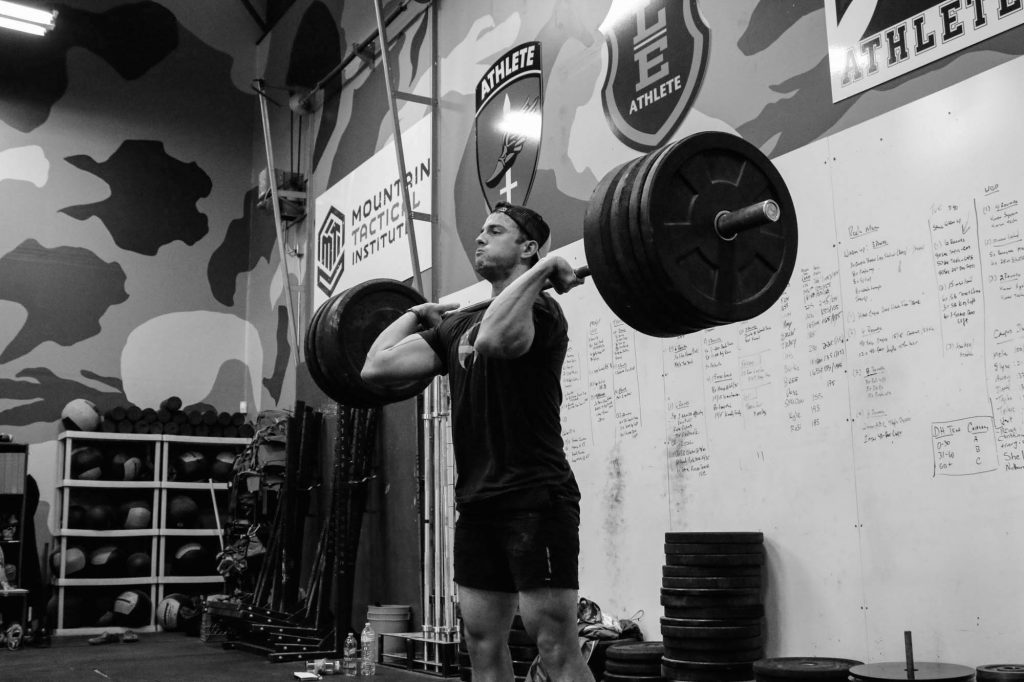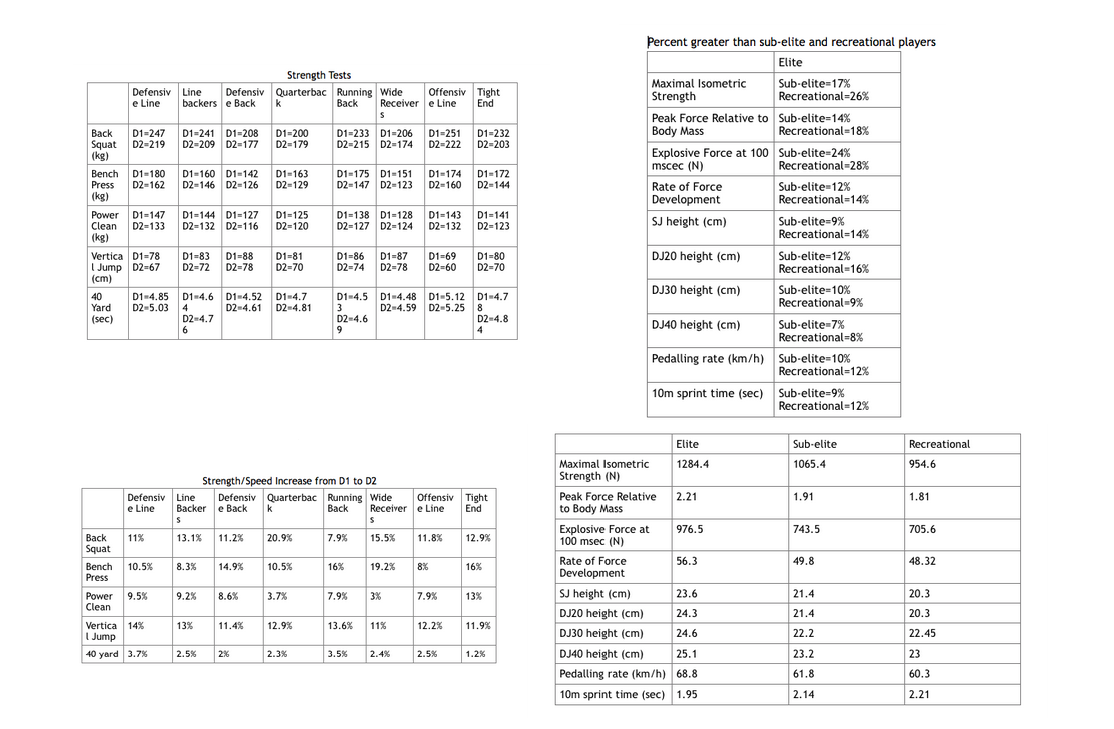
By Matt Pedersen, MS, CSCS
In the world of sports, strength is king. Strength is the amount of force you can exert over an object. That object could be your opponent as in football, or the ground for running events. Building strength is a crucial part of a strength and conditioning program for all athletes of any sport.
In sports, there is a large correlation between strength and performance. While being strong doesn’t necessarily mean you will win your event, when two athletes with very similar skills compete head-to-head, the athlete who is stronger and more powerful will have an edge in the competition. An edge is often all it takes from losing a very close game to winning.
There are a lot of research articles that show these differences when comparing what makes the elites better than those below them. More often than not, it is their strength and power.
One research study from Southeast State Missouri University looked at the differences in NCCA Division 1 and Division 2 football players in regards to strength and power aspects. They took sixteen D1 and twenty-one D2 schools and obtained their one repetition maximums from their coaches. They looked at exercises such as the bench press, squat and power clean and compared them to Division 2 football players at the same position. The researchers found that at every position D1 athletes were stronger than D2 athletes in every single exercise. They could also jump higher and run a 40 yard sprint faster in every single position.

As seen in the tables above, absolute strength has a direct correlation to playing in a better division and seeing your true potential in football. It should also be noted that the weight and height of each athlete when compared with each division was very similar, so the biggest component was the absolute maximal strength.
Another study from Boise State University looked at twenty-three women hockey players who were competing for a spot on the USA Hockey trials. Twenty-one of these players made the roster for the Olympics. They found that their 1 repetition maximum of bench press and front squat was much higher than those seen in a number of Division 1 female sports. Each Olympic team member could do 10 full strict pull-ups which is impressive and also could jump higher than most other Division 1 female athletes. These aspects plus their skill in ice hockey set them apart and made them the elite athletes that they are. So increasing your strength, upper and lower, will get you closer to performing at an elite level performance.
A similar study from Halmstad University looked at the correlation between squat strength and power and maximum skate speed in men’s hockey. They found that single leg jump strength and an athlete’s maximum squat had a moderate correlation to maximum speed achieved on the ice. And a hockey player who is slightly faster than his or her competition will be able to gain those few precious seconds, and could make all the difference between scoring a goal and not.
A study from the University of Innsbruck looked at female snowboarders and saw many positive correlations between strength and performance. The athlete’s who had stronger upper body strength both pushing and pulling and better core strength had better snowboard performance. Also, those with a more maximal explosive push-off speed had the greatest indicator of snowboard cross performance. So training explosive squats and leg drive will help an athlete achieve their full potential.
Another study from the University of Thessaloniki looked at the differences in strength and speed of elite, sub-elite and recreational soccer players. They looked at and measured variables such as maximal isometric force, rate of force development, squat jumps, and depth jumps at different heights. The results are shown below.
As can be seen, elite soccer players were stronger, more powerful and faster with every test. This is part of what separates the elite from the sub-elite: total strength, power and speed.
Even in a sport where many believe strength training is detrimental, such as cross-country running, studies have shown performance improvements with the addition of strength training. In one study from the College of Sports Medicine, they had the runners perform heavy squats, three days a week, for eight weeks. They retested and found that the runners had improved their running economy by five percent. While this may not sound like a huge increase, consider a five percent increase in each step taken, and then consider how many steps a long distance runner takes in a 5 kilometer race. This increase would greatly improve their running performance.
Whether you are a football player trying to improve your performance, or a cross country runner looking to become faster, strength training is the edge that you need to become the best athlete that you can be.
You Might Also Like Are You Strong Enough? Take The MTI Relative Strength Assessment
STAY UPDATED
Sign-up for our BETA newsletter. Training tips, research updates, videos and articles - and we’ll never sell your info.
